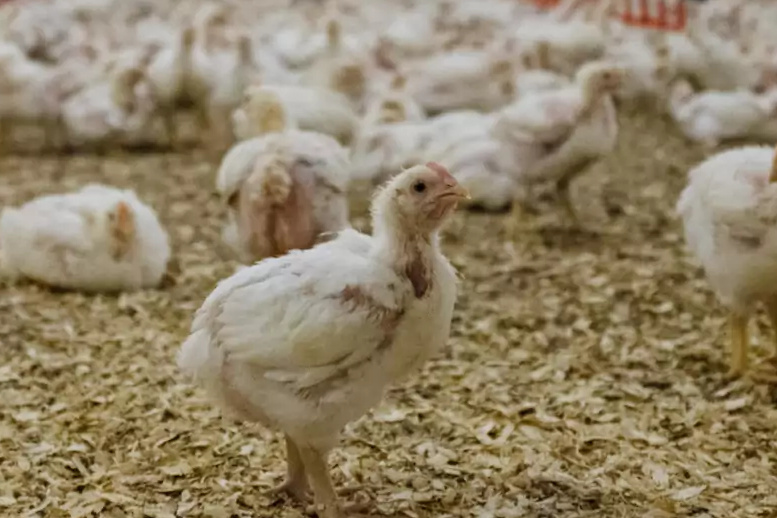Was bird flu transmitted from cows to humans?
At the Canadian Food Inspection Agency (CFIA), veterinarian Geneviève Toupin believes not. “For the moment, the most likely is that the employee in Texas was in contact with wild birds which also transmit the disease. It is also believed that there is no evidence of cow-to-cow transmission yet. »
To be infected, a person – or a mammal – must be in prolonged contact with an infected wild bird, or with an environment highly contaminated by the droppings of infected wild birds, according to the DD Toupin.

PHOTO PROVIDED BY CFIA
Geneviève Toupin, veterinarian
But Richard Webby, an avian flu specialist at St. Jude Hospital in Tennessee, says investigations into outbreaks on cow farms in Ohio and Michigan have found no risk factor other than recent transfers of Texas cows.
“It is believed that there is now cow-to-cow transmission, and that probably the farm worker in Texas was infected by the cow,” says Dr.r Webby, who has published several studies in recent years on H5N1 avian flu.
Only one other human case of H5N1 in North America has been recorded, warns DD Toupin. It concerns an employee of a chicken farm in Colorado in 2022. “Worldwide, we are talking about fifty human cases,” she says. The disease has hit Europe since 2019 and Asia for longer.
Outbreaks of H5N1 on mink farms in Europe have been linked to the use of chicken slaughterhouse residue as feed, but the possibility of mink-to-mink transmission has not been ruled out.
Since when has bird flu been affecting cows?
For a little over two weeks. “We are still trying to understand what is happening,” said Dr.r Webby. We had seen cases in mammals in the past, but never in cows, even with other avian flus in past decades, in the 20the century. »

PHOTO TAKEN FROM THE ST. HOSPITAL SITE. JUDE
Richard Webby, avian flu specialist at St. Jude Hospital in Tennessee
Does this mean that avian flu has undergone mutations that are problematic for humans, similar to those of the 2009 H1N1 swine flu?
“We saw a mutation that facilitates transmission between mammals in the first cases of cows,” says Dr.r Webby. But we have seen this mutation on different occasions over the last two years, and it does not seem to lead to very strong transmission. It remains to be seen if in the last week, with the human case in Texas and possible transmissions between cows in Ohio and Michigan, we have other mutations. »
In mammals, at the moment, the disease is generally mild, according to the Dr Webby.
The 2009 H1N1 human flu occurred after sustained transmission in pigs of H1N1 flu, which originally originated from avian flu affecting wild birds. “Comparing H5N1 avian flu and H1N1 is premature,” says Dr.r Webby. H1N1 had been circulating in pigs for years before 2009.”
Why is this avian flu more worrying than the others?
This is the first time that we have a highly pathogenic avian flu circulating in wild birds, according to Dr.r Webby. “Usually, in wild birds, we have weakly pathogenic avian influenzas, which do not kill many birds. And sporadically, we have the appearance of highly pathogenic avian influenza in chickens. These disappear because all the chickens from the affected farms are eliminated. »
Is a human pandemic about to occur?
The DD Toupin, of the CFIA, and the Dr Webby is reassuring. “It’s normal to see more cases in mammals in the fall and spring, when wild birds migrate,” says the DD Toupin. The CFIA considers the risk of human-to-human transmission to be low. »
There have been several waves of highly pathogenic avian influenza in chickens over the decades and never transmission between humans, notes the Dr Webby. “At the moment, the species most at risk appear to be wild birds and chicken. »
Is chicken, beef, eggs and milk safe to eat?
Canadian and American health authorities assure that there is no problem. The DD Toupin emphasizes that chickens from affected farms are eliminated. Movement of chickens from farms within a 10 km radius of an infected farm is prohibited.
For the moment, such “depopulation” is not envisaged for the affected cattle farms. “But we will see how the situation will evolve in the coming weeks,” said the Dr Webby. I think treating and isolating sick cows will be enough. »
A study in cows 25 years ago
Only one researcher has studied avian flu in cows. “That was 25 years ago,” says Ian Brown, director of avian virology at the Pirbright Institute, southwest London. “At the time, there was a lot of bird flu and we wanted to know if it could be responsible for the reduction in milk production on dairy farms. My research showed that cows were mainly affected in their mammary glands. It was also not very clear whether there was respiratory transmission or otherwise between cows. »

PHOTO FROM THE UNITED KINGDOM ANIMAL AND PLANT HEALTH AGENCY WEBSITE
Ian Brown, director of avian virology at the Pirbright Institute, London
An abnormal drop in milk production is also behind the current detections of avian flu in American cows, he says.
Mr Brown does not believe there is evidence of cow-to-cow transmission at this time, but he believes the number of dairy farms affected makes it more unlikely that all of these cows were infected by wild birds.
Learn more
-
- 11 million
- Number of chickens dying from H5N1 flu (including slaughters) in Canada since January 2022
source: Canadian Food Inspection Agency
- 1.4 million
- Number of chickens dead from H5N1 flu (including slaughters) in Quebec since January 2022
source: Canadian Food Inspection Agency
-
- 300,000
- Number of chickens dying from H5N1 flu (including slaughters) in Canada since January 2024
source: Canadian Food Inspection Agency
